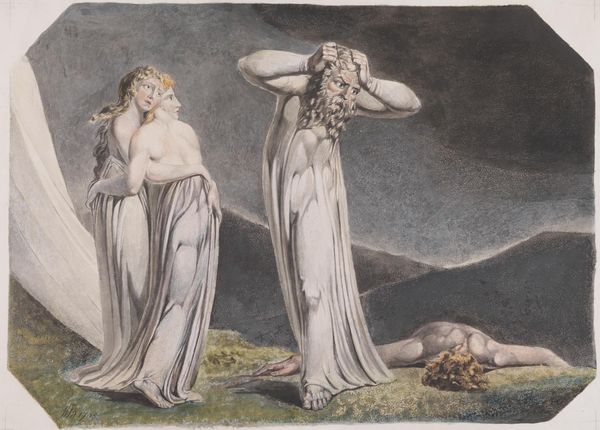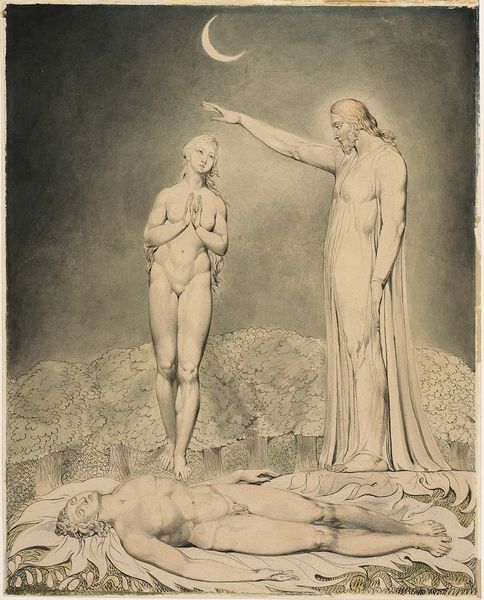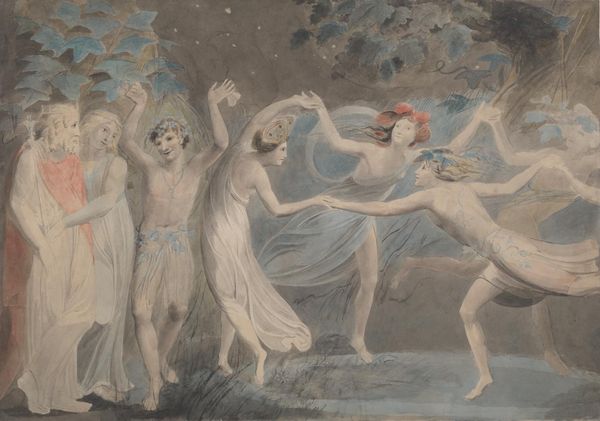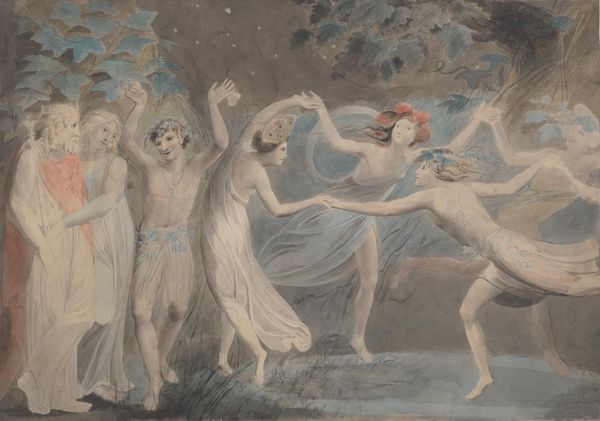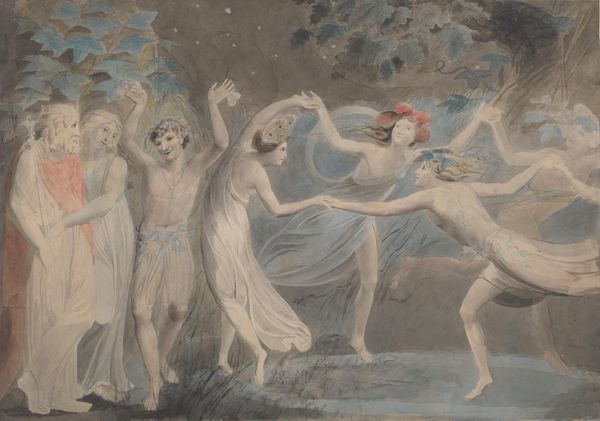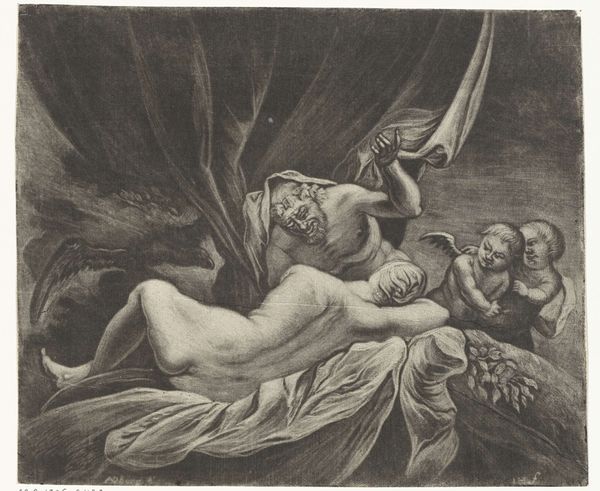
Dimensions: support: 431 x 608 mm
Copyright: CC-BY-NC-ND 4.0 DEED, Photo: Tate
Curator: This watercolor, housed at Tate Britain, is William Blake's interpretation of "Lamech and his Two Wives". Editor: A rather bleak tableau. The palette is muted, and the figures seem suspended between anguish and cold indifference. Curator: Indeed. Blake frequently drew inspiration from religious texts, imbuing them with his unique symbolism. Lamech, a figure from Genesis, confesses to his wives Adah and Zillah that he has slain a man. Editor: So, the prone figure in the foreground would be the slain man, and Lamech's posture conveys profound remorse, perhaps the dawn of understanding the implications of his actions? Curator: Precisely! Blake used such visual cues to explore themes of guilt, sin, and the complexities of human morality, always seeking to awaken our own understanding of these ancient narratives. Editor: It's a potent image, a stark portrayal of a primal, timeless drama, shaped by Blake's vision of the human condition.
Comments
tatebritain about 2 months ago
⋮
http://www.tate.org.uk/art/artworks/blake-lamech-and-his-two-wives-n05061
Join the conversation
Join millions of artists and users on Artera today and experience the ultimate creative platform.
tatebritain about 2 months ago
⋮
This work illustrates a Biblical scene from the Old Testament book of Genesis. Lamech, a descendant of Adam, confesses to his wives Adah and Zillah: ‘I have killed a man for wounding me, a young man for injuring me.’ Blake depicts the dead man sprawled face down, while Lamech stands beside him, passionately clutching at his hair. Adah and Zillah fearfully cling to one another. This is one of a series of 12 large colour prints Blake made using an experimental hybrid of printing, drawing, and painting. It was bought by Thomas Butts, one of Blake’s most important patrons. Gallery label, June 2024
